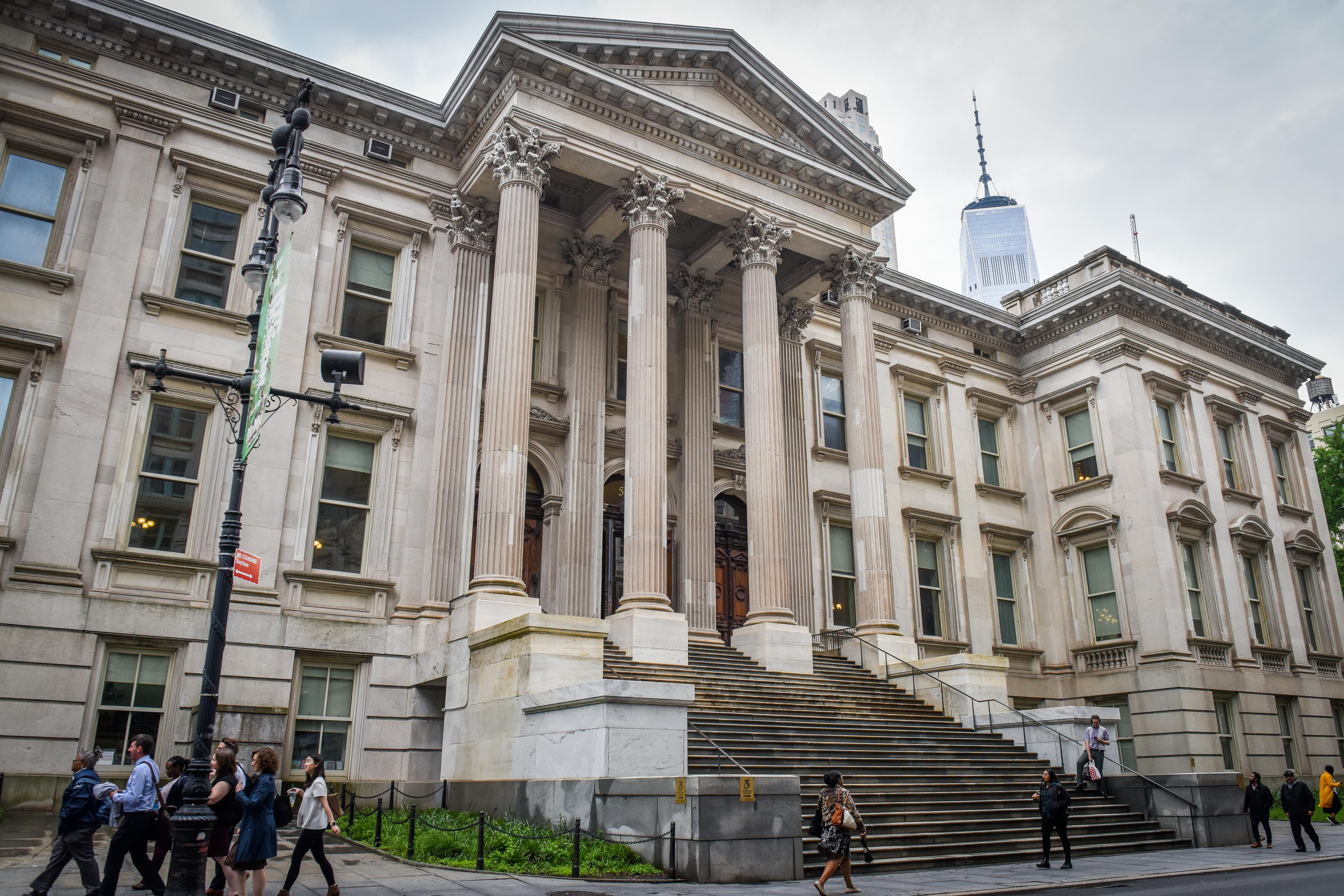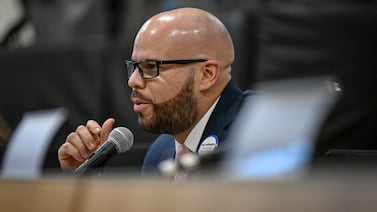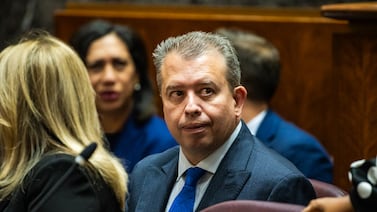To say remote learning is difficult for Lupe Hernandez’s second grader is an understatement.
Nico is on the autism spectrum and can struggle to manage his emotions, especially feelings of frustration. That’s why he is assigned a paraprofessional to spend most of the day with him at his school, P.S. 234, in Manhattan’s TriBeCa neighborhood.
But Nico’s para is barely with him this school year. Instead, the para is often dispatched to help the school fill staffing gaps, like overseeing P.E. classes, Hernandez said. It’s a problem for her son, especially on the two or three days a week he’s learning remotely.
“We have a meltdown or breakdown with every remote session,” said Hernandez, whose son’s para does not sit in on Zoom lessons. “He gets no schoolwork done on blended remote days.”
His situation is not rare.
During the pandemic, many students with disabilities have not received all of the services they’re entitled to, according to a survey of more than 1,100 parents released Tuesday by a trio of parent advocates who help families navigate the city’s special education system.
The report, based on a survey conducted in October, outlined several ways that schools are failing to provide mandated services to some of the public school system’s more than 200,000 students with disabilities. In certain cases students have only one teacher in classes that are required to be co-taught; in others they have less than an hour of live instruction on remote days.
The report lays part of the blame on the city’s reopening plan, which required schools to cover three different groups of students simultaneously: students who returned to school in-person several days a week, the same group of students on their days learning remotely, and fully remote students. In a deal between city officials and the teachers union, principals were discouraged from assigning teachers to more than one of those three groups, a directive that has strained staff and proved impossible in many cases.
“So many things are stemming from the staffing issue,” said Rachel Ford, the report’s main author, and one of the three leaders of Special Support Services, the consulting company that created the survey.
The report comes with some limitations: Since the survey was conducted online, it likely underrepresents families who don’t have reliable access to devices or the internet and face additional challenges accessing special education services. It also undercounts families in the Bronx and significantly overcounts families in certain districts, according to the breakdown of respondents.
Still, the report demonstrates that many families are experiencing significant gaps in the city’s special education infrastructure and comes on the heels of a federal lawsuit that also alleges students with disabilities have been denied services during the pandemic.
Hernandez, for instance, is one of dozens of parents who responded to the survey to report that the full-time paraprofessional assigned to help her child access his lessons was only available for 30 minutes a day or less, whether they were learning exclusively from home or a mix of in-person and virtual.
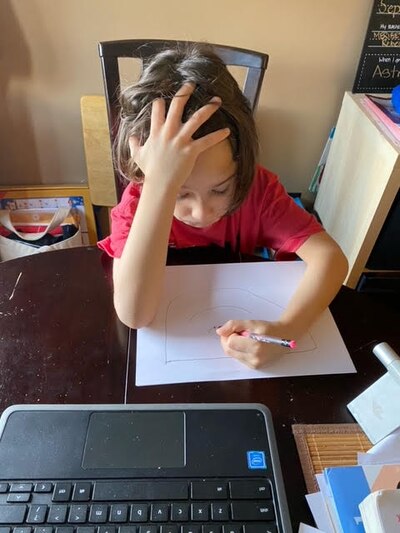
Paras are supposed to provide students with disabilities with one-on-one assistance, such as emotional support, reviewing just-taught lessons or reading aloud. However, this year, according to an agreement between the city and teachers union, paras may also be assigned to cafeteria or hall duty, attendance-related services, and health screening during arrival.
“I get that there’s a shortage, but I think it’s really unfair to my son that she’s not helping him,” Hernandez said, referring to her son’s para. She appreciates that educators are “doing the best they can under the circumstances,” but said the school system hasn’t paid close enough attention to special education services.
Other parents reported that their children have been receiving little live instruction from a teacher on the days that they’re learning from home. In a last-minute shift before the school year started, city officials said schools did not have to provide any live instruction to students in the blended model on the days they are remote, referring to the group of students who attend school in-person some days and remotely on others.
But, surprisingly, a significant slice of families reported that there is little opportunity for live instruction, regardless of whether they opted for fully remote learning. Almost half of families in the blended model who responded to the survey reported that they are receiving less than an hour of live instruction each day, six percentage points higher than those in the fully remote model.
Maggie Moroff, a disability policy expert at the non-profit Advocates for Children, which primarily works with low-income families, said the lack of live instruction appears to be a widespread issue.
“We are definitely hearing from families who are reporting on the lesser end of live instruction,” she said. “Most students need to be taught by a teacher — they need to be able to ask questions and interact with the person who is instructing them.”
Education department officials said they are reviewing the report, but emphasized that the sample was limited and that schools could have made improvements, including offering more live instruction, since the survey was administered in October.
“We know the realities of learning in a pandemic have been challenging, especially for our students with disabilities and their families, and we’ve been working with schools to strengthen the delivery of blended remote instruction over time,” department spokesperson Danielle Filson said in a statement.
She added that the city’s plan to resume in-person instruction next week for the city’s youngest students also includes over 25,000 students of all ages who attend District 75 schools, which serve those with the most significant disabilities.
The report also zeroes in on challenges with integrated classrooms, known as ICT, that are designed to educate a mix of special education and general education students and are required to be taught by two teachers. During the pandemic, city officials began allowing students in the blended model to be taught by one teacher, instead of two, on their remote days.
The survey suggests this has become a common practice, despite criticism from advocates who say it violates the law. City officials counter that it is legal because two teachers are still teaching students when they’re learning in person and are supposed to consult with each other on lesson planning. About 100,000 students with disabilities are enrolled in ICT classes, which are among the most common special education services in the city.
The issue isn’t limited to ICT classes, said Brooklyn mom Tiffani Davis, whose first grader on the autism spectrum has ADHD and has epilepsy.
Her son Raehn attends P.S. 682’s ASD Nest program, where students on the autism spectrum can learn alongside their typically developing peers and also attend small group social skills classes. Like a traditional ICT class there are supposed to be two teachers, but at the start of the year, there was only one on the two to three days a week he was learning remotely.
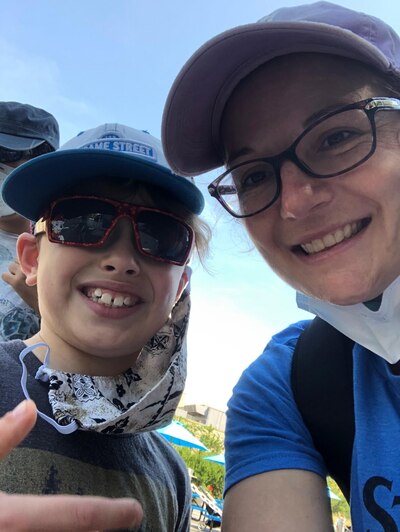
“This school year was not designed with any special needs in mind,” she said. “You can’t say they need it all the time except when there’s a pandemic. That’s when they need it more.”
Luckily, Raehn’s teacher was Nest-certified and did a great job, according to Davis, but the students needed more help on the remote days than one person could provide. As more children at the school recently switched to fully remote, the school was able to shuffle some staff around, and Raehn’s class got a second teacher for their virtual days, which has Davis feeling more hopeful.
Davis’s son also has a para who is with him all day when he is in the building. When he’s online for his remote days, she provides assistance, moving him into breakout rooms. The school only figured out how to provide the breakout rooms two weeks ago, said Davis, who is on unpaid leave from her job as a teaching assistant to help her son navigate remote schooling.
“My principal is doing a bang-up job, but I feel like there’s not been enough support up top,” Davis said.

